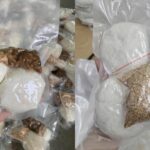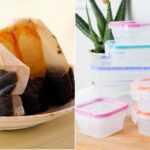Glass jars and plastic containers are ubiquitous in kitchens, but many people are unsure about their proper and safe usage. Let’s delve into the advantages and disadvantages of each to determine whether glass or plastic jars are the wiser choice!
1 Plastic Jars: Advantages and Drawbacks
Pros

– Cost-effective, with prices starting from 6,000 VND.
– A wide range of designs are readily available in stores.
– Lightweight, compact, and user-friendly.
– Versatile designs: jars with various lid types, including airtight and vented options, and microwave-safe varieties.
Uses
– Ideal for storing dry spices like chili, pepper, cinnamon, and cloves.
– Perfect for keeping dry nuts, such as cashews, almonds, and walnuts.
– Great for packing cookies, candies, and snacks.
Cons

– Prone to absorbing odors and stains from food, especially greasy or strongly-scented items.
– Challenging to clean thoroughly after use.
– Poor heat retention, suitable only for temperatures up to 50°C.
– Not all plastic jars are microwave-safe; it depends on the quality of the plastic.
2 Glass Jars: Advantages and Drawbacks
Pros
– Sturdy, durable, and elegant designs with aesthetic appeal.
– Excellent heat retention and tolerance. Safe for use in microwaves, ovens, and freezers.
– Easy to clean and maintain, with resistance to odor and stain absorption.
– Minimizes oxidation, ensuring food safety and prolonging shelf life.
Uses

– Fermenting and pickling vegetables like cabbage, radish, and carrots.
– Storing a variety of dry goods, including coffee, candies, cookies, spices, nuts, and flour.
– Packing meals, such as rice, fried dishes, porridge, and soup.
– Heating, cooking, and baking in the microwave.
– Holding hot water and food above 60°C.
– Safely preserving food, retaining its flavor and nutritional value.
Cons
– Relatively expensive, with prices ranging from 70,000 to 80,000 VND.
– Heavy and fragile, prone to breaking if dropped or mishandled.
3 Glass or Plastic Jars: Making the Right Choice
The decision between glass and plastic jars depends on your specific needs, preferences, and household dynamics. Here’s how to choose:
Choose plastic jars when:

– Storing dry spices, cookies, and candies for a short period.
– You frequently replace packaged goods, as plastic jars tend to discolor and crack over time.
– Needing temporary storage for transporting food to different locations.
– Using the microwave for reheating, opt for high-quality, thick plastic jars to ensure they can withstand high temperatures and protect your family’s health.
(Look for symbols and information on the product to identify microwave-safe plastic jars.)
Choose glass jars when:

– You prioritize a modern, elegant look and long-lasting durability without compromising kitchen aesthetics and family health.
– Besides storing spices and candies, you also need to ferment or pickle vegetables, or store chemically reactive ingredients like salt, sugar, and cooking oil.
– You require microwave-safe containers for reheating, cooking, or baking.
In conclusion, this article has weighed the pros and cons of glass and plastic jars to empower you to make an informed decision based on your unique needs and preferences.
The Four Corners of an Empty House: Superstition or Sensible?
To maximize the entry, we can install a combination of closed and open cabinets here. This will not only provide ample storage but also create a visually appealing and functional space. The closed cabinets offer a great way to hide away clutter and keep the area looking neat and tidy, while the open shelves add a touch of elegance and provide easy access to frequently used items. It’s a perfect blend of form and function, creating a welcoming and efficient entryway.







































